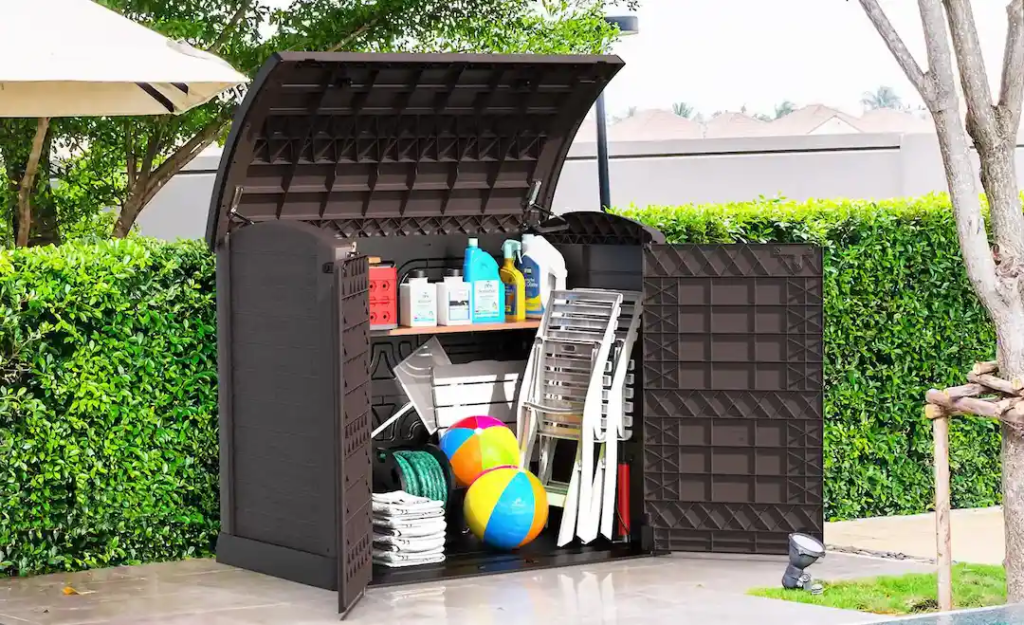
Prepare Your Tools for Winter: Simple Storage Tips That Work
As the winter chill sets in, your outdoor tools deserve the same care and attention you give the rest of your home. Without proper storage and maintenance, freezing temperatures, moisture, and rust can dramatically shorten the lifespan of your most trusted gear. Taking the time now to prepare and store your tools correctly ensures they’ll be clean, functional, and ready to go when spring arrives. Whether you’re working with power tools, garden equipment, or yard accessories, these simple winter storage tips will help you protect your investments and stay organized all season long.

Content
Clean Tools Before Storing
Before tucking your tools away for winter, start with a deep clean. Dirt, sap, and moisture left on blades and handles can cause rust, rot, or mildew over time. Use a wire brush or scraper to remove soil from shovels, rakes, and hoes. For metal tools, a damp rag and mild soap can remove most debris—just make sure to dry them thoroughly afterward.
To prevent corrosion, wipe the metal surfaces with a light coat of oil such as linseed or mineral oil. Wooden handles benefit from a layer of linseed oil, too, which helps prevent cracking and splintering. Cutting tools—like pruners, shears, and axes—should be sharpened and lubricated before storage, ensuring they’re in perfect working order later on.
If you’ve used power tools or lawn equipment during the fall, it’s essential to give them extra attention. Remove leftover fuel or winterize engines based on manufacturer recommendations. Disconnect the batteries and store them indoors, where temperatures remain steady, to preserve their charge.
Choose a Dry, Safe Space
When selecting a place to store your tools, look for a spot that’s dry and well-ventilated. Moisture is the number-one culprit behind rust and degradation. A heated garage or insulated shed is ideal, but if space is limited, even a covered lean-to or weather-protected enclosure will work.
If you store your tools outdoors, consider sheltering them in one of Keter’s trash can storage sheds. These durable, weatherproof sheds are compact yet well-structured to keep out snow and moisture. They’re perfect for small yards or patios where space is tight and help protect tools, bins, and other outdoor essentials year-round.
Inside your shed or garage, avoid resting wooden handles or metal heads directly on the ground—moisture can seep up through floors and cause damage. Instead, hang tools on wall hooks, pegboards, or racks. This not only prevents contact with damp surfaces but also keeps your storage area organized and clutter-free.
Manage Moisture to Protect Metal
Winter humidity and melting snow can cause even the most well-maintained sheds to dampen. Combat moisture by using a small dehumidifier, desiccant packs, or silica gel-filled buckets in enclosed spaces. These solutions absorb excess moisture from the air, helping prevent rust, mold, or mildew from forming on your tools.
If you’re in an unheated area, consider installing vapor barriers or insulation panels along shed walls. These help maintain stable temperatures and prevent condensation—especially when storing power tools with electrical components or batteries.
Store Smaller Tools in Containers
Hand tools and smaller items are easy to misplace during long winters. Keep everything organized by grouping them by type—gardening tools in one bin, hardware tools in another. Plastic storage bins with tight-fitting lids are excellent at keeping out dust and moisture.
You can also use hanging tool organizers, shelving units, or labeled drawers for quick access. Placing a pack of rust inhibitors or silica gel in each container ensures your metal tools stay in pristine condition while stored.
Protect Power Tools and Batteries
Power tools require different care compared to manual ones. Before storing them for the season, remove batteries completely and store them indoors at room temperature. Lithium-ion batteries can degrade in freezing conditions or fully discharge if left unattended.
Keep cords neatly coiled, inspect them for wear, and store tools inside protective cases or cabinets. Avoid stacking heavy items on top of one another to reduce the risk of cracking, bending, or electrical damage.
Tidy Up and Label Everything
Winter tool storage is also an excellent opportunity for organization. Clear out old or broken items you no longer use. Label shelving units, bins, and drawers so you can quickly find what you need when spring arrives.
Don’t forget to inspect your storage solution itself—check sheds, bins, and containers for cracks, loose hinges, or seal failures. Simple maintenance will extend their usefulness and protect your tools through snow, sleet, and frost.
Check Tools During the Winter
Even after you’ve stored your tools away, it’s wise to check on them periodically throughout the season. Look for early signs of rust, mold, or temperature damage. Reposition items if necessary and give electrical tools a light recharge to maintain batteries at peak performance.
Taking a proactive approach ensures that, when the thaw arrives, you won’t be surprised by rusted blades or corroded handles. A single hour spent inspecting your storage midwinter can save you costly repairs or replacements come spring.
Preparing your tools for winter is one of those small but vital homeowner tasks that pays off year after year. Clean them, dry them, oil them, and store them right—these four steps form the foundation of an effective winter storage routine. Whether you’re placing your gear in a large garden shed, a garage, or a trash can storage shed, the goal is the same: to shield your investment from moisture, temperature swings, and neglect. Keeping your tools dry, sharp, and ready ensures a smoother transition when spring returns and your outdoor projects resume.
With just a little bit of planning and preparation today, your tools will stay in top shape all winter long—and be ready for action at the very first sign of warmer weather.

My name is Wilson Michel. I post about home improvement ideas and how to make your home look beautiful and liveable. I hope my posts will help you with your DIY projects!







Leave a Reply